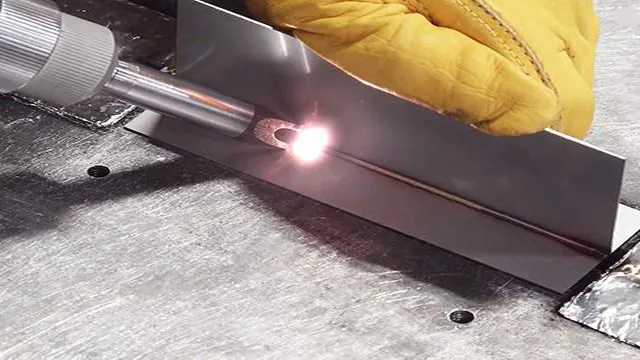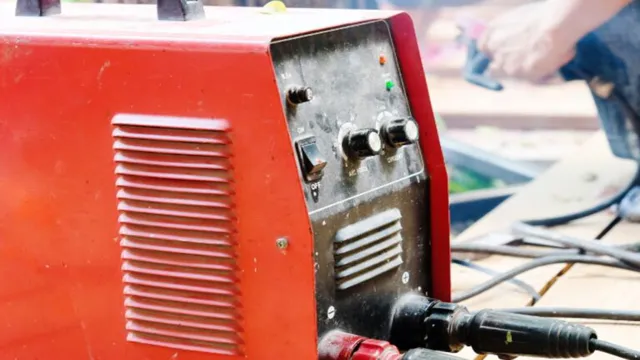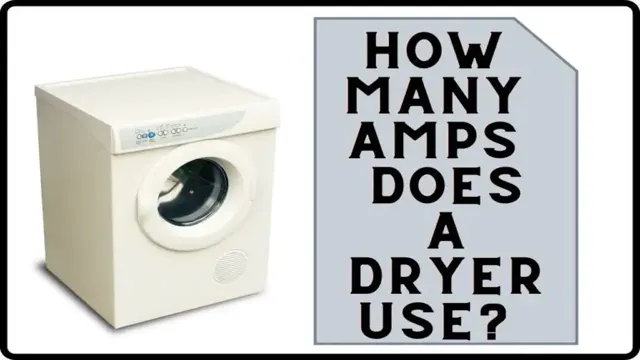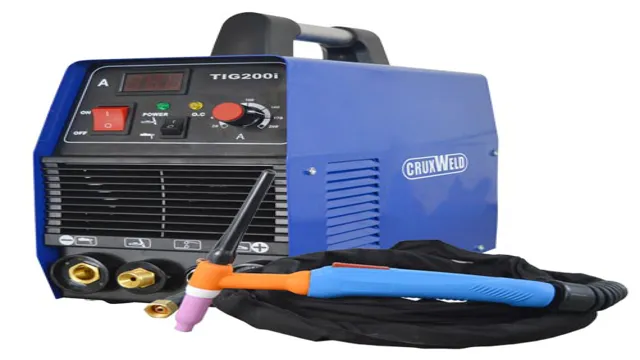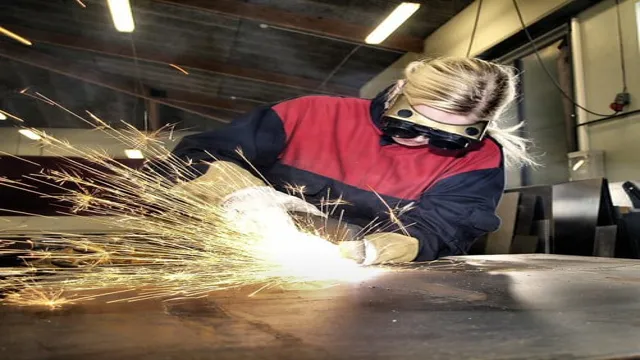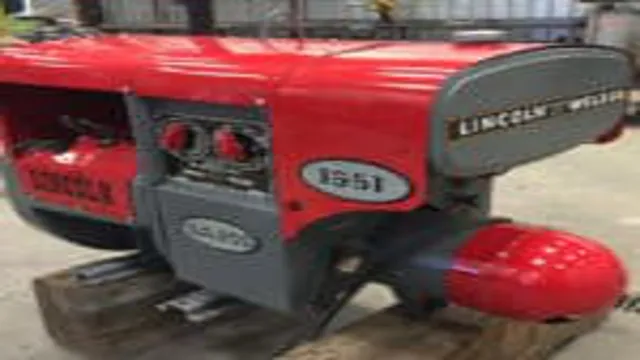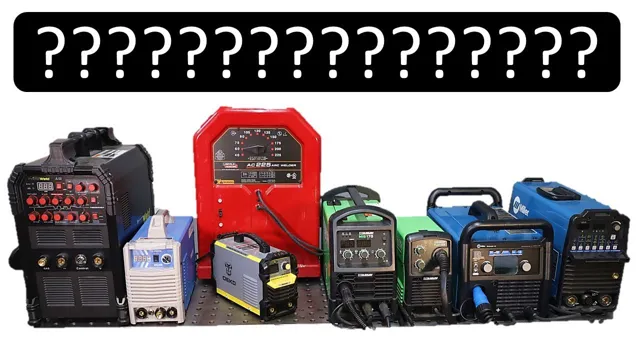Can You Wear Glasses Under a Welding Helmet? Tips and Solutions.

As a welder, you know that there are few things more important than protecting your eyes while working. Welding produces intense light, radiation, and heat that can cause serious damage to your eyes if not properly protected. However, if you wear glasses, you may be wondering if you can still wear them safely under a welding helmet.
The simple answer is yes, you can wear glasses under a welding helmet, but there are a few things you need to keep in mind to ensure your safety and comfort. In this blog post, we will explore some important considerations to keep in mind when wearing glasses under welding helmets, including choosing the right glasses, selecting the appropriate welding helmet, and tips for maintaining a clear field of vision while working. So, let’s get started and make sure that you are safe and comfortable while welding!
Introduction: Can it be Done?
Can you wear glasses under a welding helmet? This is a common question asked by many DIY enthusiasts and welders who require corrective eyewear. The answer is yes, you can wear glasses under a welding helmet. In fact, it is highly recommended that you wear protective eyewear such as safety glasses or prescription glasses underneath your welding helmet to ensure your eyes are shielded from debris, sparks, and harmful radiation.
However, it is essential to note that not all welding helmets are compatible with glasses. Therefore, before purchasing a welding helmet, it is vital to check its compatibility with glasses or look for helmets specifically designed to accommodate glasses. Additionally, once you have found the right helmet, make sure to adjust the headgear to ensure a comfortable and secure fit.
So, go ahead and wear your glasses under your welding helmet with confidence, knowing your eyes are adequately protected while you work.
Explanation of Safety Requirements
When it comes to safety requirements, there’s often a perception that they’re overly strict or impossible to achieve. But the truth is, with the right approach, safety can be prioritized without sacrificing efficiency or productivity. It starts with understanding that safety isn’t just a box to check, but rather a mindset that should be integrated into all aspects of a workplace.
This means identifying potential hazards, communicating procedures and protocols clearly, and providing employees with the necessary training and equipment to stay safe on the job. By doing so, you not only create a safer environment but also foster a culture of responsibility and accountability. Ultimately, it’s about finding the balance between safety and productivity and recognizing that they’re not mutually exclusive.
By approaching safety with a proactive mindset, it’s possible to create a work environment that is both safe and efficient.

Factors that Affect Compatibility
Compatibility When it comes to compatibility, the question that most people ask is “Can it be done?” The answer is that it depends on a variety of factors. The first thing to consider is the compatibility of the hardware and software. This means that the computer system or device you are using must have the necessary specifications to run the software or application.
The next factor to consider is the compatibility of the operating system. Some software or applications are designed specifically for certain operating systems. Another factor to consider is the compatibility of the data or files being used.
Different software or applications may use different file formats or structures, which may cause compatibility issues. Moreover, the compatibility of different versions of the same software may also be an issue. In short, while compatibility is often possible, it depends on a variety of factors.
To achieve compatibility, it is essential to understand these factors and take the steps necessary to address them.
Types of Welding Helmets Available
If you wear glasses regularly, you may be wondering if it’s possible to wear them under a welding helmet. The good news is that you can wear glasses under most welding helmets. In fact, there are welding helmets that include a magnifying lens that can benefit those who need glasses or have difficulty seeing small details.
However, before making your purchase, it’s important to ensure that the helmet you choose is compatible with glasses and that it won’t put unnecessary pressure on them. It’s also a good idea to look for a helmet that has an adjustable headgear so you can position your glasses comfortably. With the right welding helmet, you can protect your eyes and vision without sacrificing your everyday glasses.
Standard Welding Helmets 101
When it comes to welding helmets, there are a few different types to consider. The most common type is the standard welding helmet, which is designed to protect the welder’s face and eyes from harmful light and sparks. These helmets typically feature a darkened lens that can be flipped down during welding and flipped back up when not in use.
Another option is the auto-darkening welding helmet, which uses sensors to automatically adjust the lens shade based on the level of brightness in the welding area. This type of helmet can be more expensive, but it can also be more convenient and provide better protection. Finally, there are specialty welding helmets, such as those designed for overhead welding or grinding.
It’s important to consider the type of welding you’ll be doing, as well as your budget and personal preferences, when choosing a welding helmet. Ultimately, the most important thing is to find a helmet that fits comfortably and provides adequate protection for your specific needs.
Auto-darkening Welding Helmets 101
Auto-darkening welding helmets are an essential piece of equipment for welders. They protect the eyes and face from harmful radiation and debris while also allowing for clear visibility during the welding process. There are three main types of auto-darkening welding helmets on the market: fixed, variable, and adjustable.
Fixed helmets have a single shade and are best for low-amperage welding applications. Variable helmets have a range of shades that can be adjusted manually or automatically. These helmets are perfect for a variety of welding applications.
Adjustable helmets provide the most customization as they allow the welder to adjust the sensitivity, delay, and shade settings to fit their specific needs. No matter which type of auto-darkening helmet a welder chooses, it’s essential to choose a high-quality, durable product from a reputable brand to ensure maximum protection and functionality. So, when shopping for a helmet, whether it’s fixed, variable, or adjustable, a high-quality product is the key to protecting yourself while welding.
Passive Welding Helmets 101
Passive Welding Helmets 101 Types of Welding Helmets Available If you’re into welding, you know that owning a welding helmet is crucial. Welding helmets protect your eyes and face from the intense light and heat produced during welding. There are two main types of welding helmets: passive and auto-darkening.
Passive welding helmets are more traditional and economical compared to auto-darkening helmets. These helmets feature a fixed shade and require the welder to manually lift or lower the helmet to block and unblock the light. The main advantage of using passive welding helmets is that they are simple, durable, and do not need batteries to work.
There are different types of passive welding helmets available, including standard helmets, flip-up helmets, and pipeliner helmets. Standard helmets offer a classic look with a viewing area ranging from 6 to 9 square inches, while flip-up helmets allow welders to flip the lens up to see their job site clearly. Lastly, pipeliner helmets, also known as “saucer” or “cowboy” helmets, have a distinct shape that offers more protection from intense light and heat in the neck area.
Choosing the Right Glasses for Welding
Yes, you can wear glasses under a welding helmet, but it’s important to choose the right pair to ensure maximum protection. Not just any glasses will do – you need ones that are specially designed to withstand the intense light and heat produced during the welding process. Look for glasses with a shade rating of at least 10, but preferably 12 or higher, as this will give you the necessary eye protection while still allowing you to clearly see your work.
Make sure the glasses fit securely over your own prescription glasses, and consider getting a pair with side shields for extra coverage. Don’t take any chances with your eye safety – invest in the right glasses for welding, and you’ll be able to work with confidence and peace of mind.
Types of Prescription Lenses Available
When it comes to choosing the right glasses for welding, there are a few things you should consider. First and foremost, you need to make sure that your glasses offer the necessary protection from debris, sparks, and other hazards that are commonplace during welding. For this reason, many welders opt for glasses with polycarbonate lenses, which are shatterproof and scratch-resistant, making them ideal for use in rugged environments.
Some welders may also choose to go with prescription lenses, which can be tailored to their individual needs and offer added clarity and precision when working with intricate welds. Ultimately, the key is to find a pair of glasses that is comfortable to wear for extended periods and provides reliable protection that will keep you safe on the job. So, whether you are a seasoned professional or just starting out, it is important to take the time to choose the right glasses to suit your needs and keep your eyes protected while working.
Determining the Correct Frame Size and Style
Choosing the right glasses for welding can be a daunting task, but it’s crucial to ensure your eyes are protected from harmful UV rays and flying debris. When it comes to frame size and style, you’ll want a pair that fits snugly but comfortably, and won’t move around during use. Look for frames that have a wrap-around design with a close fit to prevent particles from entering your eyes.
For welding, you’ll also want to consider the lens shade and material. The lens shade should match the type of welding you’ll be doing, and the material should be impact-resistant. Polycarbonate lenses are a good choice for their durability and ability to protect against UV rays.
But most importantly, make sure your glasses meet the ANSI Z81 safety standard for eye protection. By taking the time to choose the right glasses, you’ll be able to work safely and efficiently while protecting your vision.
Conclusion: Welding Safety First
In conclusion, the answer to the question “can you wear glasses under a welding helmet” is a bit of a mixed bag. While it is technically possible to wear glasses under a welding helmet, it’s not always the most comfortable or ideal solution. The thick lenses of most prescription glasses can make it difficult to achieve a proper fit with the welding helmet, and the added weight can also cause discomfort over time.
Additionally, certain types of welding, such as TIG welding, rely on precise visibility, which can be compromised by the distortion caused by glasses. However, with the right adjustments and considerations, it is possible to work around these challenges and make glasses work under a welding helmet. In short, it may not be the easiest or most convenient option, but when it comes to welding safety and precision, you do what you’ve got to do – even if it means wearing glasses that look a bit like Cyclops from X-Men.
“
FAQs
Is it safe to wear glasses under a welding helmet?
Yes, it is safe to wear glasses under a welding helmet as long as they are made of the correct material and are in good condition.
What type of glasses are suitable to wear under a welding helmet?
Glasses that are made of polycarbonate or Trivex material are suitable for wearing under a welding helmet.
Can you wear prescription glasses under a welding helmet?
Yes, you can wear prescription glasses under a welding helmet as long as they are made of suitable material and are not damaged.
Is it necessary to wear glasses under a welding helmet?
It is not necessary to wear glasses under a welding helmet if you have adequate vision protection in the helmet, but wearing glasses can provide extra protection.
Can wearing glasses affect the fit of a welding helmet?
Wearing glasses under a welding helmet can affect the fit of the helmet, so it is important to choose glasses that are not too bulky.
How can you ensure that your glasses do not fog up while wearing them under a welding helmet?
You can use an anti-fogging spray on your glasses before wearing them under a welding helmet to prevent fogging.
Are there specific safety standards for glasses worn under welding helmets?
Yes, glasses worn under welding helmets must meet specific safety standards such as ANSI Z87.1-2015 to ensure that they provide adequate protection.

